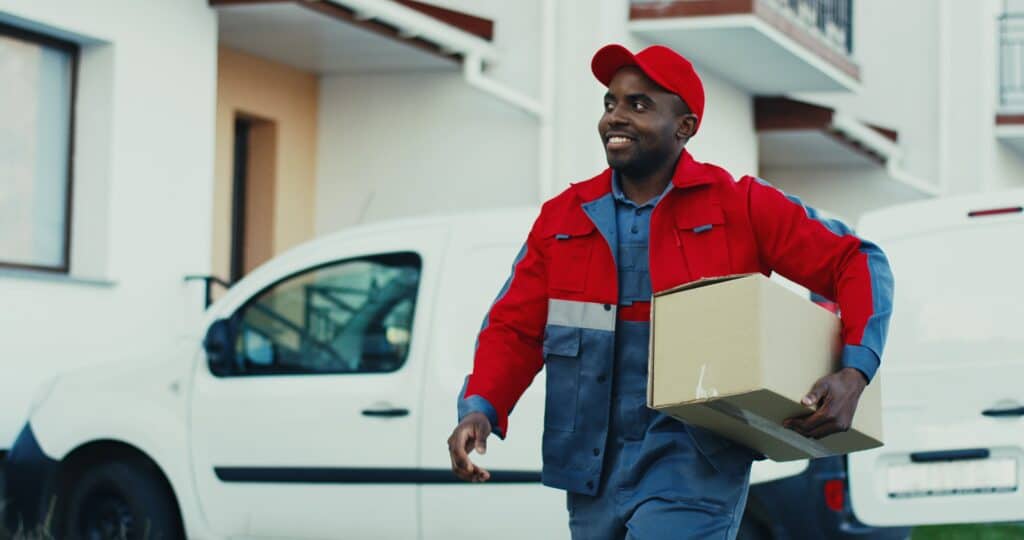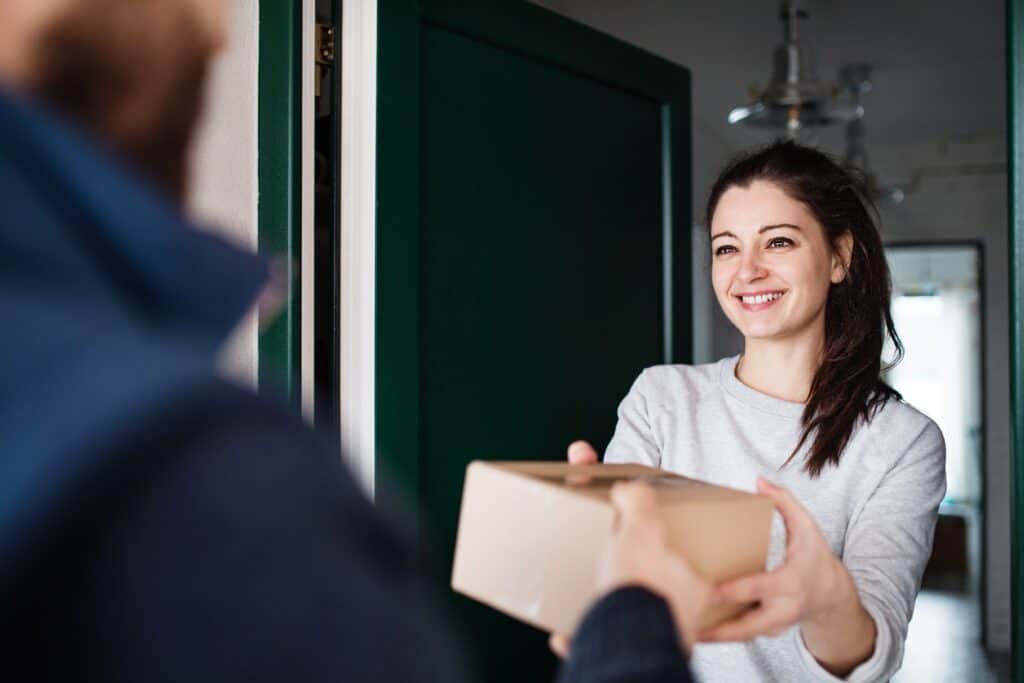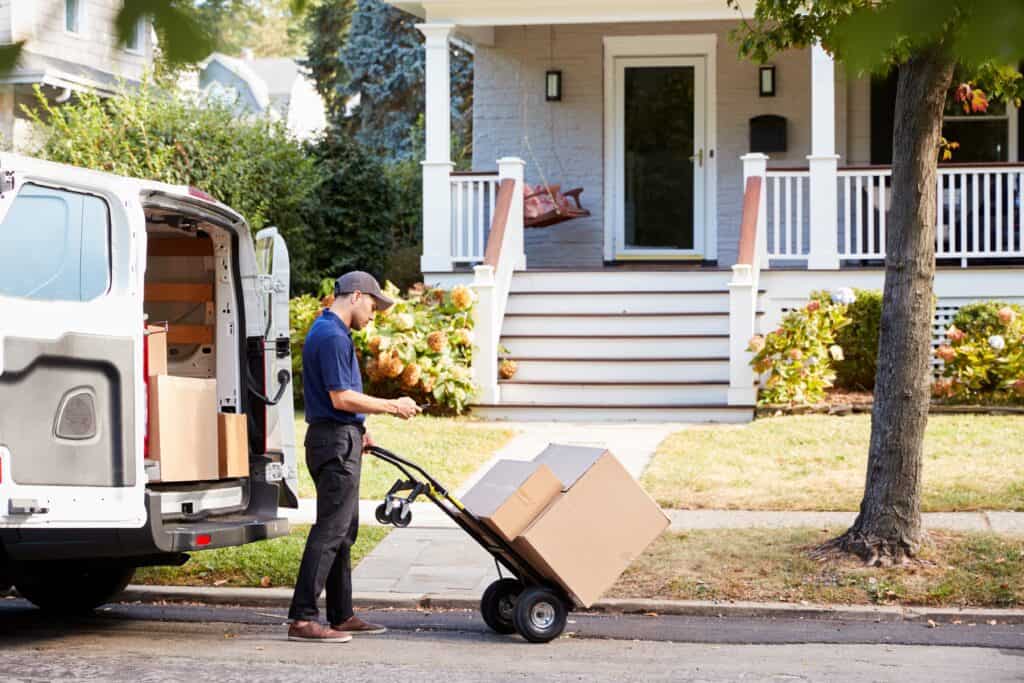
Last Mile Statistics 2023: Insights, Innovations & Trends

Wise Systems
Last Mile Statistics 2023: Insights, Innovations & Trends

Wise Systems

Much attention is focused on last-mile delivery today. A look at last-mile statistics reveals last-mile delivery accounts for more than half of total shipping costs (53%), and it also has a significant impact on customer satisfaction. At the same time, customers have high expectations such as convenient delivery windows, fast delivery, and free and low-cost shipping.
The growth of e-commerce means that there are millions of packages delivered to customers every day, which is challenging for retailers and delivery partners. These companies must handle increasing volumes of e-commerce orders while maintaining efficient operations, managing costs effectively, and meeting customer expectations. That’s why last-mile delivery statistics indicate optimizing last-mile delivery is a top priority.
We curated this list of last-mile statistics on the last-mile market size, last-mile technology adoption, consumer expectations, fulfillment and delivery methods, and more to provide some insight into the current state of last-mile logistics today, the key challenges, and what strategies retailers and delivery providers implement to overcome these obstacles.
In this article:
- Last-Mile Market Statistics
- Last-Mile Statistics on Technology
- Last-Mile Delivery Statistics on Consumer Expectations & Brand Loyalty
- Last-Mile Statistics on Failed Deliveries
- Last-Mile Statistics on Fulfillment & Delivery Methods
- Frequently Asked Questions
Keep reading to discover some eye-opening last-mile statistics that reveal the state of last-mile delivery—and where it’s heading in the coming years.
Last-Mile Market Statistics
 The last-mile delivery market is growing rapidly. Valued at $131.5 billion in 2021, the last-mile delivery market is expected to grow at a CAGR of 8.13%, reaching $288.9 billion by 2031.
The last-mile delivery market is growing rapidly. Valued at $131.5 billion in 2021, the last-mile delivery market is expected to grow at a CAGR of 8.13%, reaching $288.9 billion by 2031. - The B2C segment of last-mile delivery has the highest market share. Straits Research reports that the B2C segment has the maximum share of market, an estimated $91.7 billion in 2021. Straits Research estimates the last-mile delivery market size was about $143.8 billion in 2021 and projects the market will reach $428.9 billion by 2031.
- The last-mile delivery software market is also growing. According to Verified Market Research, the last-mile delivery software market was valued at $7 billion in 2021. With a CAGR of 9.3% from 2023-2030, it’s expected to reach $16 billion by 2030.
- The pandemic accelerated e-commerce growth. During the COVID-19 pandemic, the e-commerce sector experienced the equivalent of 10 years of growth in just three months, according to McKinsey.
- More consumers are shopping online. According to FinancesOnline, there were 255.99 million digital shoppers in the U.S., an increase from 230.57 million in 2017. This figure is projected to grow to 278.33 million by 2024.
- Last-mile deliveries in urban areas are expected to increase substantially. In a 2020 report, the World Economic Forum predicted a 78% increase in last-mile deliveries in urban areas by 2030.
- In-house delivery fleets are the most common method of last-mile delivery. Forbes reports on survey findings from APQC (American Productivity & Quality Center), which found that 42% of companies rely on in-house delivery fleets—a higher percentage than any other method of last-mile delivery. A third-party provider other than parcel/post is the second most common method of last-mile delivery, with 33% of respondents using this method.
- E-commerce continues to grow. According to the U.S. Census Bureau, e-commerce sales in the second quarter of 2023 increased by 7.7% year-over-year, accounting for 14.7% of total sales. Total retail sales increased by 0.5% in the same period.
- Online sales nearly doubled from 2019 to 2021 in the U.S. A paper published in June 2021 in Transportation Research Interdisciplinary Perspectives reports that online sales in the U.S. increased to $73.2 billion year-over-year, from June 2019 to $73.2 billion in 2020. This massive increase is attributed largely to the COVID-19 pandemic, as many consumers felt safer shopping from home.
- The market size for autonomous last-mile delivery vehicles is also growing. According to a 2021 report by Research and Markets, the autonomous last-mile delivery market is projected to reach $45.27 billion by 2027, an increase from an estimated $9.98 billion in 2018.
- Domestic parcel traffic is growing. According to Statista, domestic parcel traffic increased from 21 billion parcels in 2019 to more than 24.8 billion units in 2020. By 2026, the market is projected to reach 260 billion parcels delivered.
- Millions of packages are delivered every day. According to Insider Intelligence, an estimated 100 million packages will be delivered each day by 2026.
- Cities will experience disruption without intervention to resolve congestion issues by 2030. If action isn’t taken in the interim, the top 100 cities are expected to experience a 36% increase in delivery vehicles, a 32% increase in emissions, and a 21% average increase in congestion, adding an average of 11 minutes to commuting time, according to findings from McKinsey reported by Transinfo.
- Rising costs is one of the biggest challenges for retailers. According to Roadie’s 2022 Last-Mile Outlook: The Future of Crowdsourced Delivery report, 45% of retailers and supply chain leaders responding pointed to inflationary pressures on the costs of goods and services as a barrier to implementing an effective last-mile delivery strategy, and 41% cited rising transportation rates as an obstacle.
- Last-mile delivery is getting faster. Project 44’s May State of Transformation – Last Mile report, the average amount of time from order date to delivery in April 2023 is about 4 days (3.8 days), a decrease of 31% from April 2022, when the average was 5.6 days, and a decrease of 46% since the first week of April 2021, when the average amount of time from order date to delivery was 5.8 days.
- Businesses see same-day delivery as an opportunity. The National Retail Federation (NRF) reports on findings from an Attabotics study, which found that 80% of high-level marketing and business executives view same-day delivery as an opportunity to boost revenue and lower supply chain costs.
Last-Mile Statistics on Technology

- More than half of retailers rely on manual, inefficient order planning and dispatch. 55% of retailers responding to Bringg’s January 2022 survey say that the inefficiency of their current manual planning and dispatch process is a significant pain point.
- Technology isn’t delivering the desired results. According to PwC, “83% of executives say their supply chain technology investments haven’t fully delivered expected results.”
- Visibility into the last-mile is a problem for retailers. In its January 2022 survey, Bringg found that 41% of retailers were managing multiple fulfillment channels using disparate technologies, and 61% reported that visibility into the last mile is a major challenge. More than one-fourth of respondents (26%) say visibility is a significant issue when working with multiple delivery partners.
- A lack of visibility when orders are out for delivery is a major paint point. Bringg’s January 2022 survey found that 61% of retailers lack visibility once orders are out for delivery.
- AI-powered route optimization tools are most effective at finding the most cost-efficient routes. For example, DHL implemented a dynamic routing algorithm, known as Greenplan, that saved 20% on delivery costs, as well as computational time, compared to traditional route optimization tools, while Tesco’s AI-powered vehicle routing and scheduling system contributed to a savings of 11.2 million miles and 8% fuel per order.
- For shippers, technology solutions play a role in selecting a 3PL partner. In the 2023 27th Annual Third-Party Logistics Study, 75% of shippers report that they’re placing a bigger emphasis on technology solutions when evaluating and selecting a 3PL partner, while 87% of 3PLs said that shippers are focusing more on technology solutions as part of their evaluation process.
- Artificial intelligence (AI) and machine learning (ML) account for the majority of planned technology investments. Artificial intelligence and machine learning are top investment priorities for executives, according to PwC. 22% of executives plan to invest $5 million or more in AI and ML by 2025.
- Delivery app enhancement and contactless processes are top priorities in last-mile delivery. A 2021 survey of companies in North America and Europe found that 41.2% of North American and 22.2% of European companies say contactless processes are a top priority. Delivery app enhancement tops priorities among European companies, with 42.9% of respondents saying it’s a top priority in last-mile delivery, while 35.3% of respondents from North America said the same.
Last-Mile Delivery Statistics on Consumer Expectations & Brand Loyalty

- Delivery is a key component in customer loyalty. In a survey conducted by Digital Commerce 360, 98% of respondents say that delivery is one of the most important factors in their loyalty to a brand. However, 44% say brands are not creating positive delivery experiences.
- Less than half of online consumers say retailers meet their delivery expectations. A survey conducted by eMarketer, reported by TMCnet.com, found that just 45% of online shoppers say that retailers meet delivery expectations, indicating there’s a big opportunity for brands that can get delivery right.
- Negative shipping experiences impact repeat purchases and customer lifetime value (CLV). Over 8 out of 10 consumers (84%) would not purchase from a retailer again after a single negative delivery experience, according to ProShip.
- Short delivery windows is a key competitive advantage. 68% of online consumers say they look for shorter delivery windows as the determining factor when placing an online order.
- Convenient delivery time slots matter more to consumers than fast delivery. Flash Box reports on the findings of a 2022 survey that found 72% of online shoppers prioritize convenient delivery times over fast delivery.
- However, speed is still an important factor. Capgemini reports that more than half of consumers (55%) will switch to another retailer or brand that offers a faster delivery service.
- Delivery cost is also a significant factor in brand loyalty. In a survey conducted by Atos in early 2021, 61% of consumers surveyed say they’d switch providers to avoid paying high delivery costs.
- Nearly half of consumers would abandon an online shopping cart due to unsatisfactory shipping times. A 2020 report by McKinsey & Company found that 46% of consumers would abandon their online shopping cart if delivery estimates are longer than expected.
- More than half of consumers shop with the brands that offer the fastest delivery. In a January 2022 survey conducted by SOTI, 61% of respondents say they continue to shop with the brands that deliver their orders the fastest.
- Shipping and delivery is frustrating for consumers. More than half of consumers (53%) responding to SOTI’s survey say that shipping and delivery time is the most frustrating aspect of shopping online.
- More than two-thirds of consumers expect complete visibility. In SOTI’s January 2022 survey, 68% of respondents say they expect to have complete visibility into the shipping and delivery process, knowing where their order is at all times throughout the delivery process.
- Shipping delays, missing items, and damaged items make up nearly two-thirds of last-mile delivery complaints. According to Project 44, the top three customer complaints (in April 2023) were delayed deliveries (24.8%), packages delivered but missing items (22.4%), and damaged items (20.9%). Together, these three complaints account for 65% of all customer complaints about last-mile delivery.
Last-Mile Statistics on Failed Deliveries

- Less than half of businesses offer in-store pickup or next-day delivery. Research conducted by Bloomreach found that flexible purchase and delivery options are increasingly important to create a positive customer experience, but just 41% of businesses offer in-store pickup, and 27% offer next-day delivery as part of their current strategy.
- About one in 10 orders aren’t delivered on the first attempt. Enterprise Times reports, “99% of eCommerce organizations own up to failed deliveries across some portion of their orders. While 24% admit more than one in ten orders aren’t delivered on the first attempt. The costs of failed deliveries are far-reaching. 8% of domestic first-time deliveries fail, costing retailers an average of $17.20 per order or $197,730 per year.”
- Inaccurate address data is a significant case of failed deliveries. According to Enterprise Times, 74% of businesses say bad address data is the cause of as many as one of four failed deliveries. However, just 47% of businesses rated the accuracy of physical address data as “critical” for first-time delivery success.
- Failed deliveries come at a cost. Failed deliveries cost about $10 per order, according to Atos, but this cost is compounded by the negative impact of failed deliveries on customer loyalty. Customers who experience failed delivery may switch to another retailer, so it affects future purchases and ultimately, the company’s bottom line as well.
Last-Mile Statistics on Fulfillment & Delivery Methods

- Fulfillment footprints are key. Amazon nearly doubled its operations capacity from 2020 to 2022, growing its number of U.S. fulfillment centers by 30% in 2021 with the goal of positioning inventory closer to consumers to increase delivery speed and cut costs, according to Supply Chain Dive.
- Most retailers are expected to offer same-day delivery by 2025. Due to continued consumer demand for fast delivery, 99% of retailers are expected to offer same-day delivery by 2025, according to a 2020 survey conducted by Roadie and reported by FreightWaves. At the time the survey was conducted, just 35% of retailers were already offering same-day delivery.
- Most e-commerce deliveries to consumers are delivered to the customer’s home. According to a 2020 report by the South California Association of Governments (SCAG), 74% of consumer e-commerce deliveries are delivered to the customer’s home, while 16% are delivered to authorized locations such as a store or locker, 5% are delivered to a workplace, and 5% are delivered to a family member or friend.
- Globally, nearly two-thirds of consumers are satisfied with delivery to parcel lockers. According to International Parcel Corporation (IPC), 65% of consumers responding to its 2019 IPC Cross-Border E-Commerce Shopper Survey say they’re extremely or very satisfied with delivery to parcel lockers. However, delivery to the customer’s home was associated with the highest satisfaction.
- Major last-mile delivery companies are investing in electric vehicles, parcel lockers, and other innovative last-mile delivery solutions. McKinsey & Company interviewed Christoph Hempsch, head of sustainability for Deutsche Post DHL’s German Post and Parcel. According to Hempsch, at the time of the interview, DHL ran 20,000 electric vehicles every day out of a total of 60,000 vehicles and had built a dense network of more than 9,000 parcel lockers.
- Smart lockers, or self-collection lockers, can reduce carbon emissions. Charged Retail reports on InPost’s planned implementation of 60 new smart lockers across London stations, reducing carbon emissions by 193 tonnes.
- More than half of consumers would pay more for delivery by autonomous delivery robots. A study published in Transportation Research Part D: Transport and Environment found that 61.28% of consumers are willing to pay more to have their packages delivered by autonomous delivery robots.
- Drones have the potential to offer substantial savings in energy consumption. According to a 2022 paper published in Patterns, drones can consume up to 94% less energy per package delivered than traditional delivery transportation modes.
- There’s a marked increase in interest in autonomous delivery systems. CB Insights analyzes earnings calls to identify trends. In Q3 2022, there were 20 mentions of autonomous delivery systems among the earnings calls analyzed, an increase from 6 mentions in Q3 2021 and higher than any other quarter in the past five years.
- Amazon fulfills 76% of customer orders entirely from fulfillment centers located within each region. Amazon’s regionalization plan split the U.S. into eight regions served by dedicated fulfillment centers, with the goal of fulfilling as many orders as possible from the regional fulfillment centers, only shipping orders from farther away when necessary. After implementation, 76% of customer orders are fulfilled entirely from fulfillment centers within each region, an increase from 62% before the plan was executed.
There are several key takeaways from these eye-opening last-mile statistics:
- Customers want fast, affordable delivery with a positive delivery experience.
- Failing to meet these expectations has a negative impact on customer loyalty.
- Improving efficiency and managing costs are top priorities for businesses.
- Innovative technology helps businesses deliver on these expectations.
As these last-mile statistics reveal, most retailers know the importance of investing in the right technologies to manage costs, improve efficiency, and boost customer satisfaction. However, finding the right technology is a challenge for many. The Wise Systems delivery automation platform offers a suite of technology solutions to optimize last-mile delivery, from dispatch to routing, performance management, last-mile visibility and automated delivery notifications.
Wise Systems is powered by an AI-driven Dynamic Optimization Engine (DOE) that continuously ingests operations data to support real-time, data-driven decision-making. Book a demo today to discover how Wise Systems can transform your last-mile delivery operations.
Frequently Asked Questions
What percentage of the total costs are last mile?
According to last-mile statistics, last-mile delivery accounts for 53% of the total cost of shipping, although it can range from about 40% to 55%.
What is the market size of last mile?
The last-mile delivery market was valued at $131.5 billion in 2021. Last-mile statistics indicate that the market is expected to grow at a compound annual growth rate (CAGR) of 8.13%, reaching a projected $288.9 billion.
Why is last-mile delivery growing?
Recent growth in the last-mile delivery market is driven largely by the growth of e-commerce. Last-mile delivery statistics show that more consumers are shopping online than ever before, and customer expectations include faster and more convenient deliveries and affordable (or free) shipping. Optimizing the last mile is essential for businesses to meet these expectations.
What is the future of last-mile logistics?
The future of last-mile logistics is driven by advancements in technology. Autonomous delivery robots, delivery drones, and software solutions like advanced route optimization software are just a few of the technology solutions designed to help streamline last-mile logistics. We can expect to see more last-mile statistics focused on these technologies in the coming years.

